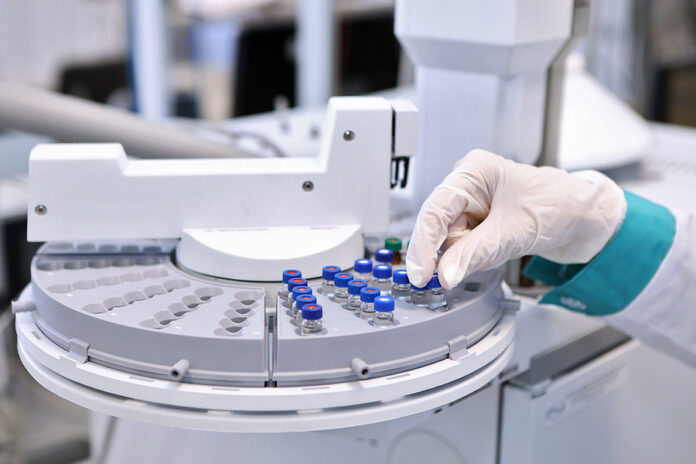
By Maryam Sayeed & Rajashree Chakravarti, Phenomenex
Key Takeaways:
- PFAS in food packaging pose health risks and face increasing regulation, including FDA bans on certain materials.
- Advanced testing methods can detect PFAS at very low levels, with migration from packaging to food being a key concern.
- Industry trends favor PFAS-free alternatives; manufacturers should consider adopting safer, biodegradable packaging options to stay ahead of regulations and address consumer concerns.
Per- and polyfluoroalkyl substances (PFAS) are synthetic chemicals widely used in various industries, including food packaging, due to their water and grease-resistant properties. They are persistent in the environment and human body, leading to potential health risks that are being identified by ongoing clinical research around the globe. The presence of PFAS in food packaging has raised significant concerns about their migration into food products and subsequent ingestion by consumers.
To control PFAS levels, regulatory bodies are setting stringent limits on PFAS levels in food packaging materials. Additionally, advancements in analytical techniques improve the capabilities of measuring PFAS in various matrices, ensuring better monitoring and control. Conversely, innovations in biodegradable and non-toxic coatings are being developed to provide the same functional benefits without the associated health risks.
Introduction
PFAS are commonly found in food packaging materials such as microwave popcorn bags, fast food wrappers, and pizza boxes. While these chemicals provide functional benefits, their persistence in the environment and the human body has raised significant health concerns. This review will cover the major drawbacks of having PFAS in food contact materials (FCM) and food packaging, along with an overview of the analytical techniques employed by recent studies to quantitate PFAS.
PFAS and commercial use in food packaging/food contact material (FCM)
PFAS are extensively integrated into coatings and embedded in consumer and industrial applications such as non-stick frying pans, textiles, paper, and firefighting foams due to their chemical nature to repel water, oil, and dirt. Due to the strength of the carbon-fluorine bond, PFAS are chemically stable and highly resistant to biological and chemical deterioration. This makes them ideal for use in food packaging production, where they provide benefits like resistance to thermal degradation, grease, and moisture uptake.
With new findings of adverse health and environmental consequences due to PFAS, innovations in the food packaging industry continue to use paper and plant-based alternative materials for the advantage for biodegradability. Paper and cardboard FCM are among the most common PFAS applications, offering non-stick coatings. Commercially available paper-based FCM products include microwaveable popcorn bags, disposable paper plates, and fast-food packaging.
Food safety concerns and regulations
Several global regulations have emerged to help protect the environment and population from legacy and novel PFAs compounds to mitigate health risks. PFAS is ubiquitous in the environment and can be found in water, soil, biosolids, and dust due to its ability to slowly degrade over time. Epidemiological studies found a link between human exposure to long-chain perfluorooctanoic acid (PFOA) and perfluorobutane sulfonic acid (PFOS) with far-reaching health impacts.
The European Food Safety Authority (EFSA) also presented a risk assessment and raised public health concerns about PFAS-contaminated food products. U.S. Food and Drug Administration (FDA) banned the sale of paper-based and cardboard FCM containing PFAS used for grease-proofing in the U.S. market. This decision addresses food safety concerns as PFAS can migrate from packaging into food, leading to dietary exposure by consumers. Migration tests are conducted to measure PFAS levels under controlled conditions, with factors such as storage temperature, moisture, contact time, food composition, and packaging material properties influencing the results. While the European Union has regulations for migration tests on plastic FCMs, similar guidelines for paper-based FCMs are currently lacking.
PFAS testing in food matrices, FCMs and food packaging
Migration tests for PFAS in food packaging can be conducted using advanced analytical techniques to measure how much these chemicals transfer from packaging materials into food. Currently, liquid chromatography coupled to tandem mass spectrometry (LC-MS/MS) is a widely available sensitive instrumentation that allows for the separation and detection of PFAS at parts per billion (ppb) levels. There are specified analyte lists and methods available from the regulatory agencies. LC-MS/MS mediated PFAS analysis involves sample preparation followed by targeted and non-targeted approaches to detect and quantify the desired analytes.
Sample preparation
Extensive sample preparation is required to analyze food, packaging and FCM samples, which involves sample extraction using dispersive solid phase extraction (dSPE) for complex matrices. PFAS-specific extraction using weak anion exchange media and graphitized carbon black ensures that ionizable samples can be injected and successfully analyzed using recovery, accuracy, and precision parameters. Researchers have employed a protocol to cut FCM samples into an equivalent dimension, weighed, and extracted with an organic solvent before sonication. Actual food samples require different treatment protocols due to the variety of matrices and PFAS compounds. Since PFAS can be found anywhere, lab consumables used during these steps, such as centrifuge tubes, SPE cartridges, HPLC vials/caps, and syringe filters, should be suitable for PFAS analysis by not introducing PFAS contamination and false positives in the results.
Analytical testing
Liquid chromatography coupled with triple quadrupole mass spectrometry (LC-QqQ) or liquid chromatography coupled with time-of-flight mass spectrometry (LC-QTOF) is widely used for its sensitivity and selectivity in detecting low PFAS levels. Multiple reaction monitoring (MRM) with negative mode electrospray ionization (ESI) is used to help reduce background noise. Gas chromatography with chemical ionization mass spectrometry (GC/CI-MS) can quantify volatile PFAS compounds and fluorotelomer alcohols (FTOHs). For non-targeted PFAS screening, liquid chromatography coupled with high-resolution mass spectrometry (LC-HRMS) is employed to identify PFAS compounds that have migrated into food stimulants.
LC separation is performed on reversed-phase C18 column and utilizes gradient conditions. Additionally, using a delay column before injection is essential to minimize background interference from contaminants. To achieve accurate detection and quantitation of low PFAS levels in the samples, the system components (e.g., tubing, column connectors, HPLC solvent inlet) should be free of potential sources for PFAS contamination.
Biomonitoring of PFAS
Biomonitoring of PFAS involves measuring levels of PFAS in biological samples (blood or urine) to help assess human exposure to PFAS. It is a growing area to control and spread awareness on impact of PFAS, as the sources of PFAS include drinking water, food, and food packaging. The technology for testing closely resembles the method described for PFAS in FCM and packaging with minor modifications that are appropriate for biological samples.
Conclusion
There is a growing concern about PFAS contamination in food from packaging. Current techniques can measure trace-level detections of PFAS in paper-based FCMs and liquid food stimulants. However, work is still underway to identify the mechanisms of migration of PFAS into food. Although details have yet to be discovered, it is presumed that more stringent guidelines and increased testing will be performed in the future to reduce levels of PFAS and the corresponding impacts on the environment.
 Since joining Phenomenex in 2023, Maryam Sayeed focused on expanding solutions for chromatography products and consumables designed for the food and environmental markets. Maryam has 9 years of experience in the food and beverage industry, which includes hands-on experience in HPLC analysis.
Since joining Phenomenex in 2023, Maryam Sayeed focused on expanding solutions for chromatography products and consumables designed for the food and environmental markets. Maryam has 9 years of experience in the food and beverage industry, which includes hands-on experience in HPLC analysis.
 Rajashree Chakravarti serves as Global Product Manager for Phenomenex, and has over a decade of extensive hands-on experience in small molecule chemistry, porous material synthesis and functionalization, analytical method development, and clinical assay development in a highly regulated environment as required in In Vitro Diagnostics (IVD) industry.
Rajashree Chakravarti serves as Global Product Manager for Phenomenex, and has over a decade of extensive hands-on experience in small molecule chemistry, porous material synthesis and functionalization, analytical method development, and clinical assay development in a highly regulated environment as required in In Vitro Diagnostics (IVD) industry.

Credit: Source link












